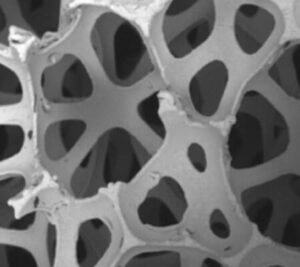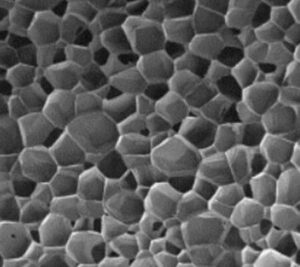What Is Foam Tape? Features, Types and Applications
2021/07/28

Do you have sealing, shock absorption, or noise reduction and can’t find the right solution? If so, foam tape might be a good solution for you. Foam tape is made from a foam backing with adhesive on one or both sides. They come in many types depending on the backing, adhesive type, and each has its own characteristics. We’ll discuss the different types of foam tape and list some common applications.
1. What Is Foam Tape and What Are Its Uses
Foam tape is a pressure sensitive adhesive (PSA) made from a foam backing. They are available with different types of adhesives on one or both sides. The adhesives can be acrylic, rubber, or silicone. Foam tapes are used in many applications where gaps need to be filled and sealed.
2. Types of Foam Tapes
2.1 Types of Foam Tape Substrates
Polyethylene is a type of plastic that is often used as a substrate for foam tapes. It is a soft, lightweight material that is easy to work with.
Polyurethane is another type of plastic that is commonly used as a substrate for foam tapes. It is a strong, durable material that can withstand high temperatures.
Rubber is a natural material that has been used as a substrate for foam tapes. It is a strong, durable material that can withstand high temperatures and has good abrasion resistance.
Silicone is a synthetic material that is often used as a substrate for foam tapes. It has excellent heat resistance and can withstand extreme temperatures.
2.2 Types of Foam Cell Structure
There are two types of foam cell structures: open-cell and closed-cell. Open-cell foam cells are interconnected, softer, more breathable, and easier to be compressed. Closed-cell foam bubbles are completely surrounded by the bubble walls. The bubbles are not easily compressed, so they are relatively rigid.

Soft texture, high water absorption, high compression rate, suitable for sound-absorbing sealing applications, such as compressed sponge for earphones, air conditioner sealing strips, etc.

Independent foaming, low compression residual rate, low water absorption, good thermal insulation and cushioning performance, good dustproof, suitable for sealing and dustproofing, waterproof and shock absorption of electronic products.
3. Features of Foam Tape
- Provides an excellent seal to keep out dust, moisture or prevent outgassing.
- Good resistance to compression deformation, providing excellent shock absorption protection
- Flame retardant, environmentally friendly, free of harmful substances
- Withstands high temperatures up to 200°C.
- The surface has excellent wettability, easy to die-cut, suitable for bonding and fixing of various sizes, and can also complete waterproof sealing.
- High adhesion, good weather resistance, not easy to peel off after a long period of harsh environment
- Waterproof, high temperature resistance, solvent resistance, acid and alkali resistance
4. Different Types of Adhesives on Foam Tapes
Foam tapes come with different types of adhesives. The most common type is the acrylic adhesive. This type of adhesive is known for its high strength and resistance to extreme temperatures. It also has good UV resistance and can be used indoors or outdoors. Another type of adhesive used on foam tapes is the rubber-based adhesive. This type of adhesive is known for its high stickiness and resistance to water. It can be used on both smooth and rough surfaces. Lastly, there is the silicone-based adhesive. This type of adhesive is known for its high heat resistance and flexibility. It can be used on both outdoor and indoor use.
There are 3 kinds of adhesives commonly used in foam tape: acrylic adhesive, rubber adhesive, and silicone adhesive.
Acrylic Adhesive: The most commonly used adhesive for foam glue. Acrylic glue has high strength, high temperature resistance and excellent UV resistance, suitable for outdoor and indoor use.
Rubber Adhesive: High viscosity and water resistance. Can be used on smooth and rough surfaces.
Silicone Adhesive: excellent temperature resistance and flexibility, can be used outdoors and indoors.
So, which one should you use?
It depends on your application. If you need a weather-resistant and strong bond, acrylic adhesives are the best choice, then the acrylic adhesive is the best option. If you need a sticky and water-resistant bond, then the rubber-based adhesive is the best option. If you need a flexible and heat-resistant bond, then the silicone-based adhesive is the best option.
5. Applications of Foam Tapes
5.1 Automotive Industry
Double-sided acrylic foam tape is perfect for permanently fixing body curves and corners. It has strong adhesion to different materials, including automotive exterior parts or paint. Since the body and exterior parts have different thermal shrinkage rates, static or dynamic stresses are easily generated and act on the bonding parts. Foam tape can have the best stress dispersion effect. In addition, the foam tape also has an excellent effect on the waterproof sealing of the exterior trim and noise reduction.
5.2 Electronic Products
Double sided foam tape (such as 3M VHB 86415) is suitable for touch screen, window and backplane bonding applications of electronic products such as mobile phones and tablets.
Narrow bezel designs are becoming more and more common in electronic products. On a very small bonding area, the foam tape has excellent bonding strength, absorbs the impact force of drops and collisions, and exerts the effect of shock absorption, thereby preventing the cover glass from falling off or shattering. Urethane foam tape has the function of buffering and suppressing sound in electronic products such as printers, keyboards, etc.
5.3 Architecture
The double-sided foam tape can be bonded between glass or aluminum profiles. The transparent nature of this material creates an invisible partition wall bonding effect that is also perfect for filling in any gaps you may have on your project.
Eye-catching building façades can be finished by masking decorative walls. Foam tapes are an excellent alternative to traditional mechanical fixing methods because they create a cleaner and more aesthetically pleasing look while meeting the high demands of outdoor weather resistance.
Foam tape is a quick and easy way to change the look of your room without hiring an expensive designer or contractor. With just one piece, you can transform any surface into something new. Tape installs panels quickly and cleanly, without damaging the material and without waiting for curing time.
With the foam tape, you can fix your elevator door panel so it doesn’t get deformed by external forces. In addition to ensuring a strong and durable bond, it is also resistant to vibration and impact.
Decorative panels made of glass, wood and glazing can be found in cabinets or closets to provide an elegant look. The foam tape can carry a certain weight of the panel and complete the durable and firm fixation between different materials.
5.4 Appliances
Foam tape is a great way to fix transparent or translucent decorative panels on household appliances. The invisible bonding ensures the aesthetic design of your appliance, and it absorbs vibrations for reduced noise while still allowing high adhesion against low surface energy surfaces such as plastics. With its water resistant property, a vinyl foam tape (such as 3M 4516) can be used for a variety of purposes from sealing HVAC systems to stopping drafts in your home.
5.5 New Energy
Foam tapes are a must in the solar industry for bonding components that have to withstand tough conditions, such as module back beams and concentrators. The quick-bonding process ensures reliable construction with minimal curing time needed so it can be done quickly, when necessary, without compromising on quality or responsiveness.
Wind blades are often designed with external parts like deflectors and serrated trailing edges that can be bonded using foam tapes to reduce assembly time, optimize blade processing in factories across the world. Foam tapes provide excellent stress dispersion while also maintaining a high level of weather resistance for long lasting use outdoors or inside buildings.
5.6 Transportation
Foam tape can effectively deal with the assembly of components in the ceiling, wall and floor of trains, high-speed rail or planes. Fastening can be done efficiently and securely, while complying with the requirements of DIN EN 45545 for “Aluminum-Tape-Aluminum” sandwich constructions. Everything that is used in trains, high-speed trains or airplanes today requires a fire rating according to DIN EN 45545, which requires the use of certified fire-resistant materials.
Category
